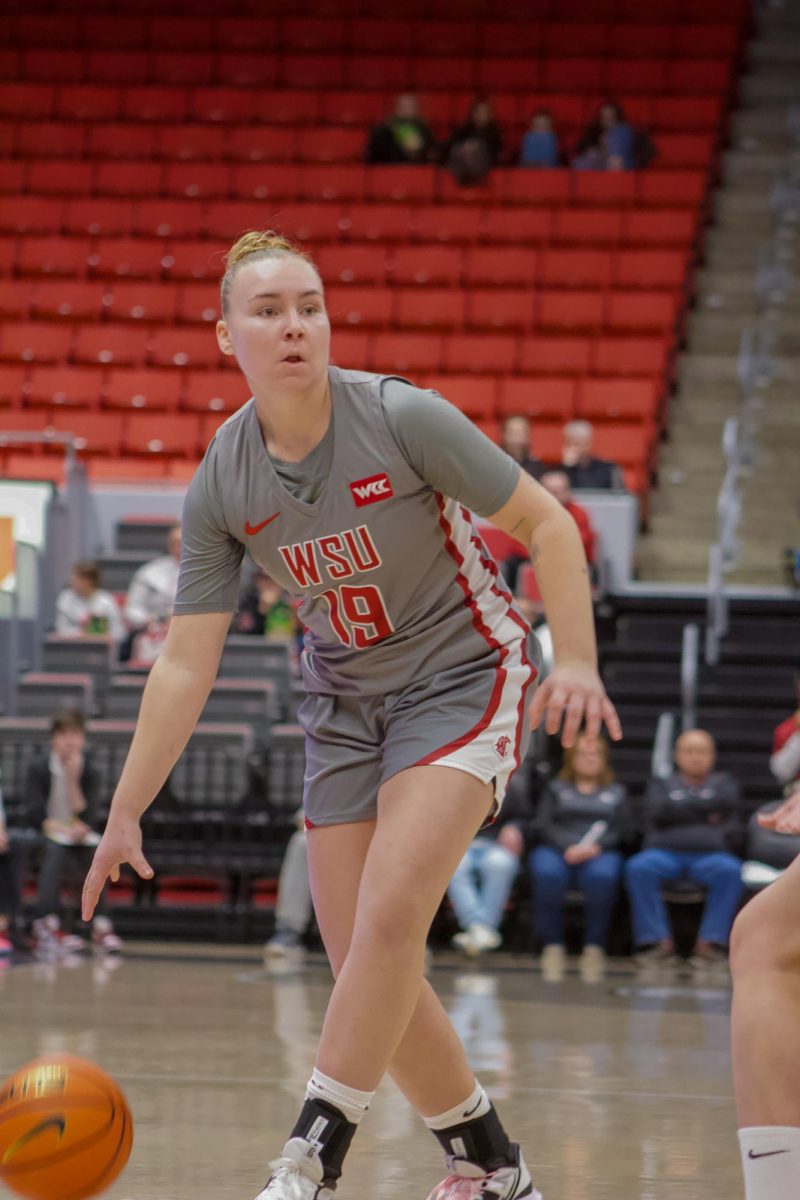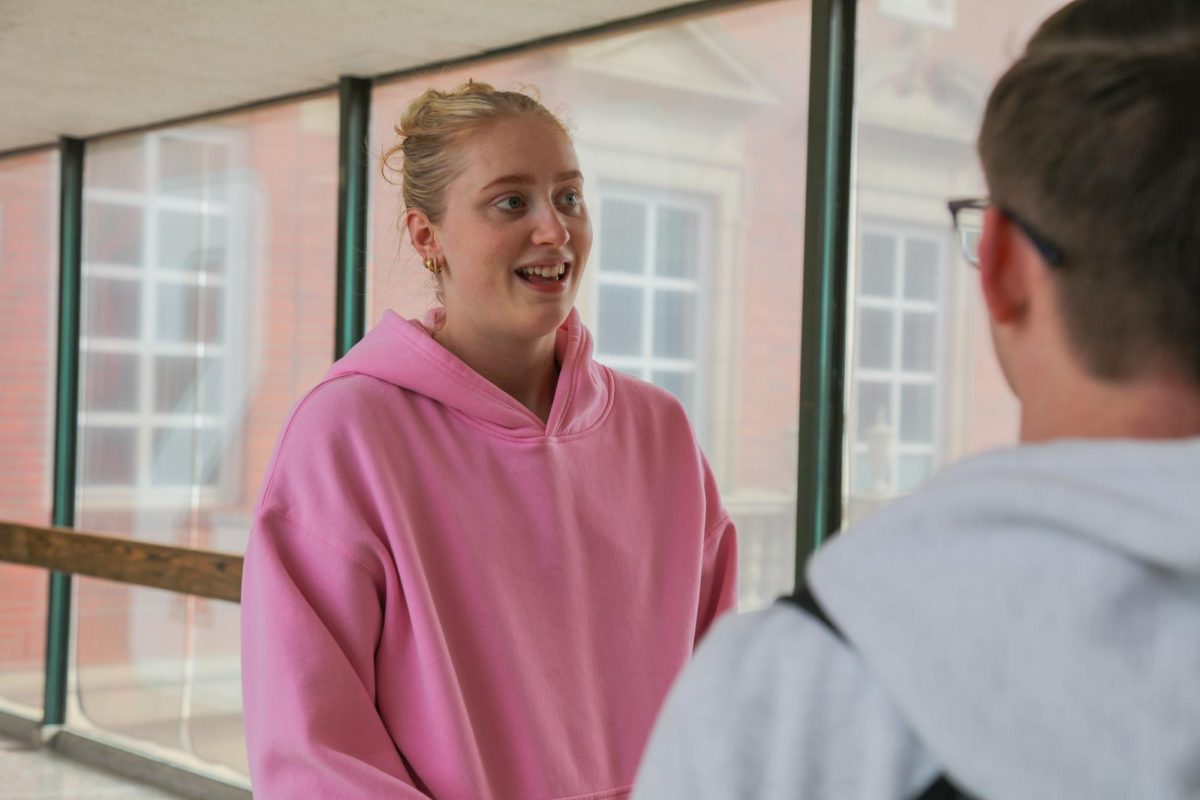Just last month, the Washington State Crimson Girls traveled over 3,000 miles to compete at the Universal Dance Association Collegiate Dance Nationals in Florida at the ESPN Wide World of Sports Complex, the Superbowl of dance. Yet their recognition is practically non-existent despite their immense commitment and athleticism.
“We have a hard time getting representation as athletes,” said Anastasia Trinidad, senior and Crimson Girls team captain.
There are 143 Division-I college dance teams, the Washington State Crimson Girls being one of them.
While dance teams are recognized by college divisions and athletics, they are not recognized by the NCAA. The NCAA defines a sport as “an institutionalized activity involving physical exertion with the primary purpose being competition versus other teams or individuals within a collegiate competition structure.” The NCAA argues that the main purpose of the dance team is to support athletics rather than compete in athletics.
“When people see us we are just on the sidelines with our pom poms and that is all they see but they don’t really see the training that goes behind what we really love to do which is our national competition,” Trinidad said.
This year the Crimson Girls competed their jazz routine against 64 other teams and placed 11th, and competed their Hip Hop routine against 18 other teams and placed ninth.
This contradicts the definition given by the NCAA as the dance team does in fact have a “competition structure.”
Another example of how they are not treated equitably is what the team is provided.
This year the Crimson Girls competed in their Jazz dance against 64 other schools.
Prior to the day of the Nationals competition, the teams have an allotted time to practice their routines on Marley. Marley is a type of flooring that is made to have the right amount of traction for dance. It is slick enough to do turns but has enough grip so they don’t slip on a leap.
Trinidad said that when they practice on the Marley in Orlando, it is the first time they have ever run their dance on Marley.
“At WSU we don’t have a place to practice on Marley which is what we compete on,” Trinidad said.
At WSU they practice on hardwood floors that are used by people other than those on the dance team. Hardwood floors are often placed on top of concrete which does not absorb the impact from jumps and leaps which is hard on the body, causing more injuries.
Dancers try out for the team but are not awarded scholarships. Dancers are also unable to enjoy the same dining perks as the other athletes.
“At Washington State, we are very lucky,” Trinidad said. “But the bar is very low.
The Crimson Girls have a designated athletic trainer. Trinidad said this fact sets WSU apart from other colleges.
“I know some people who dance at other college teams that don’t have athletic trainers so when they get hurt, there is no one to help them,” Trinidad said.
WSU has trainers for the dance team, an important step in their recognition, Trinidad said.
One example of how the dance team’s recognition differs from other sports is the Scholar-Athlete Award which recognizes athletes’ academic achievements. It is difficult to be a student-athlete so this is an award that honors the hard work athletes also put into their academics.
Trinidad said she cheered at a basketball game and the players came out on the court to be recognized for their GPAs, but the dance team was not allowed to participate.
Trinidad said the Crimson Girls were not allowed to be recognized as scholar-athletes.
“See, there’s just like those little small things that are like ‘okay, we want you under athletics but we are not gonna get all the same perks and like recognition as other athletes,’” Trinidad said.
The lack of recognition, representation and quality treatment is un-equitable compared to other collegiate sports.
The dance team does not have a designated season like the other sports. They practice every day and attend games all throughout the year.
During the “off-season” We practice Monday, Wednesday, Friday from 6:45 – 8:45 a.m.,” Trinidad said.
The other mornings they lift. This is a light schedule compared to “In season.”
“In December we have 9 – 5 practices every day,” Trinidad said. “Leading up to when we leave for Orlando.”
While the rest of the school is back home for the holidays, they are training 40 hours a week, basically a full-time job.
“A lot of just not knowing too much about what dance is,” Trinidad said.
She recommends people go to practices and ask questions to learn more about the sport she loves.
“I went to one dance clinic at WSU and I was like yep this is what I want to do,” said Trinidad.
Trinidad said she fell in love with the WSU team.
“The athleticism of the dance team and just like how much it is treated as a sport and I do like the training aspect of it as far as weight training goes,” said Trinidad.
She will soon try out for the Los Angeles Lakers dance team.
Although Trinidad said she did not strive to be a collegiate dancer when she started at the age of 3, since joining the Crimson Girls, she does not regret it.
“I’ve loved it ever since,” Trinidad said








